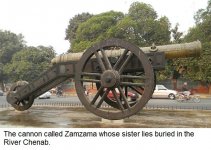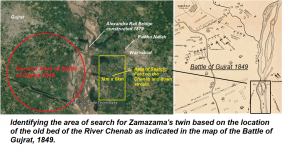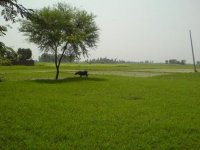The sister of a cannon named the Zamzama which was cast 260 years ago sank while being ferried across a major river in Pakistan. i need help / advice on how to locate it and what would be the best detector to use. The Zamzama is on display in Lahore and its barrel is made of copper and bronze, weighs 4.5 tons and is 14 feet long. The river as changed its course since the sister of the Zamzama sank and the area identified for the search is now heavily cultivated and the soil is loam (clay, silt & sand). The floodplain of the river is prone to flooding and depositing layers of silt/loam and the barrel may be 10-15 feet below the surface. i have marked out an area of 6 km by 3 km and i presume a grid would have to be surveyed and marked before commencing the search. I have no experience of searching for buried objects and would certainly need expert help / advice. [SUB]

 [/SUB]
[/SUB]

 [/SUB]
[/SUB]
Upvote
0





 I am now very clear on how to differentiate false signals. As you would have understood, this is a large project in terms of time and money and I am trying to get the government interested in it. If they do agree then I will have to put a team together to do research on the possible location(s) of the cannon and then search the sites (s). it will in my estimate require 3-4 teams with metal detectors (both large and small coils) working concurrently and following the process that you have so nicely and carefully explained. The question that I want to ask is this: Should I have the site(s) first scanned with an earth sensitivity meter (ESM) and only use the metal detectors where the ESM indicates the presence of large objects? Each site area (and there may be 2-3 sites) may be 3km x 6km. How much area does an ESM cover? Warmest regards. Zamzama
I am now very clear on how to differentiate false signals. As you would have understood, this is a large project in terms of time and money and I am trying to get the government interested in it. If they do agree then I will have to put a team together to do research on the possible location(s) of the cannon and then search the sites (s). it will in my estimate require 3-4 teams with metal detectors (both large and small coils) working concurrently and following the process that you have so nicely and carefully explained. The question that I want to ask is this: Should I have the site(s) first scanned with an earth sensitivity meter (ESM) and only use the metal detectors where the ESM indicates the presence of large objects? Each site area (and there may be 2-3 sites) may be 3km x 6km. How much area does an ESM cover? Warmest regards. Zamzama


